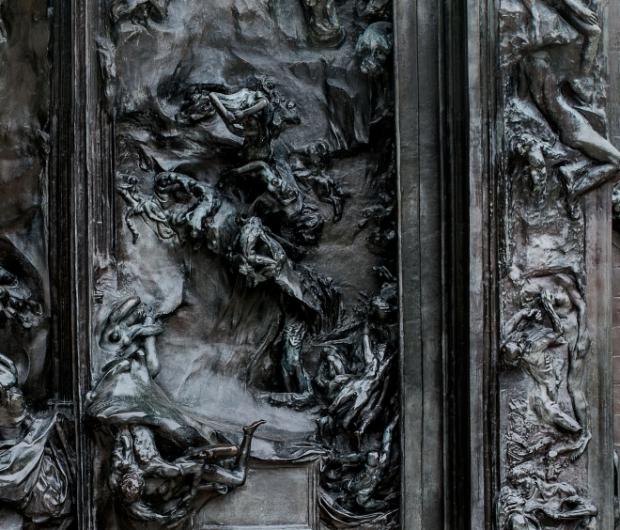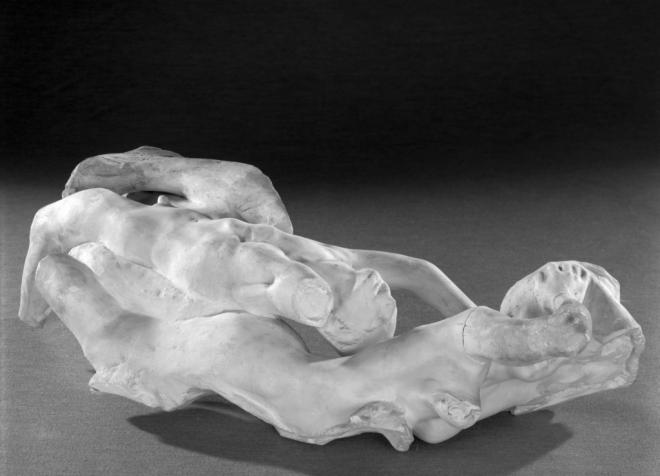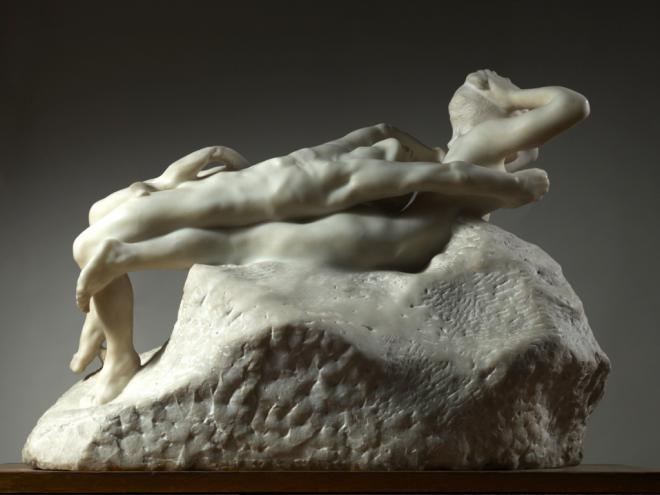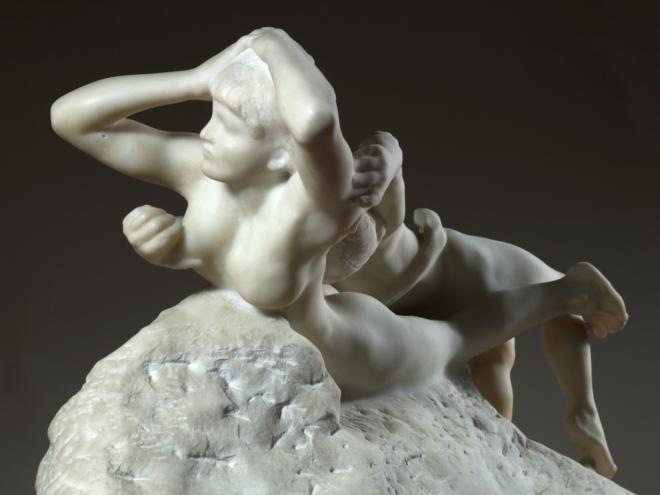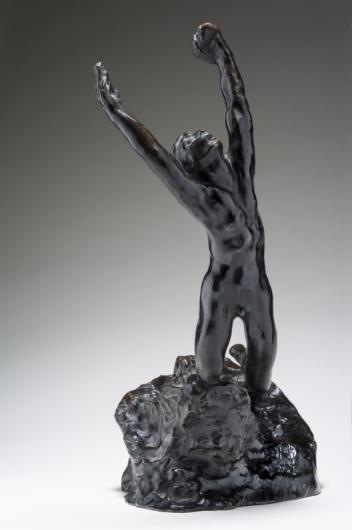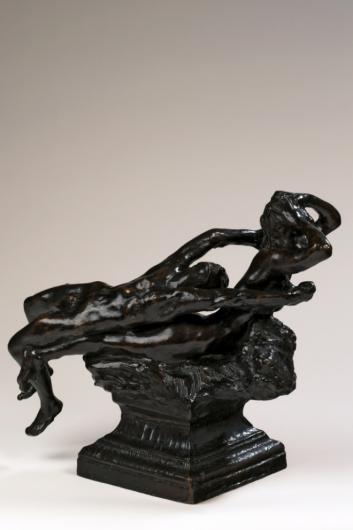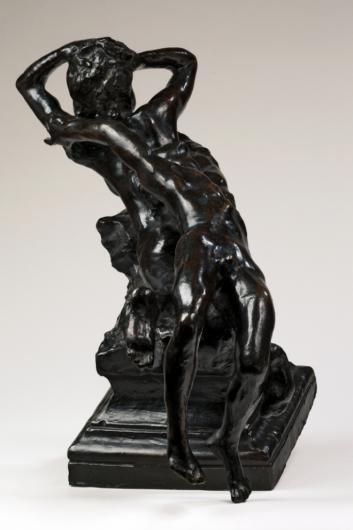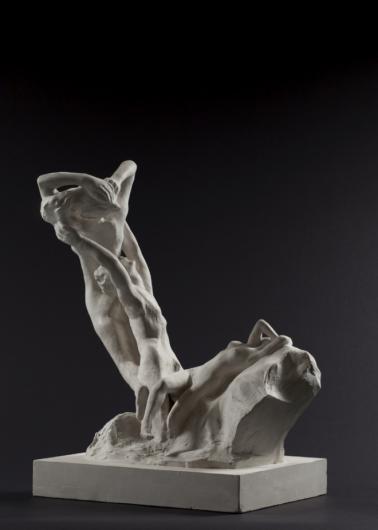Fugit Amor
Fugit Amor is one of the many compositions created by Rodin as part of the second circle of Hell, the “Circle of the Lustful”, where those who give in to carnal temptations are punished. Dante describes them in Canto V of Inferno, buffeted back and forth by the winds that torment the lovers with no respite. The group is presented in two versions in the right panel of The Gates. Rodin took great care to place the group in two different positions: one, surging out of the background, slightly above the viewer, almost horizontal, and the other, conversely, sinking into the backdrop.
Outside of this infernal context, the work received praise from a number of commentators from a Symbolist perspective. Octave Mirbeau, for example, alluded to “this small bronze, more painful than any single line of Baudelaire”, and compared the female figure to “an arrow tearing the air apart, her face cruel and inexorable […]. She has the elusive beauty of the fantasies we chase and the dreams that will never come true”. Paul Bourget, for his part, saw “a symbol [...] of the mighty struggles that accompany the end of love”.
This group was such a success that Rodin produced several bronze copies, mounted on a variety of bases, along with marble copies that play on the relationship between the figures and the block. Lastly, The Prodigal Son is none other than the single male figure standing on a mound, in a disequilibrium that adds to its dramatic expression.









